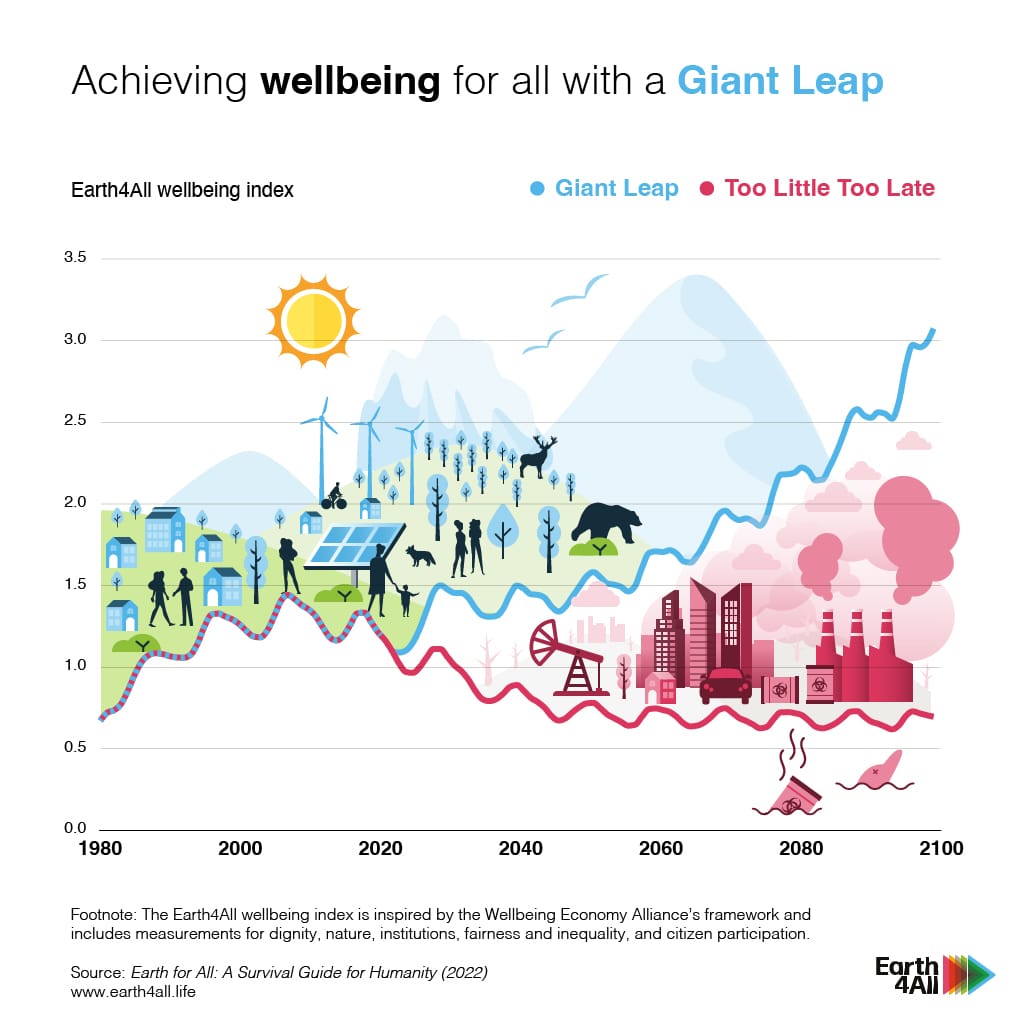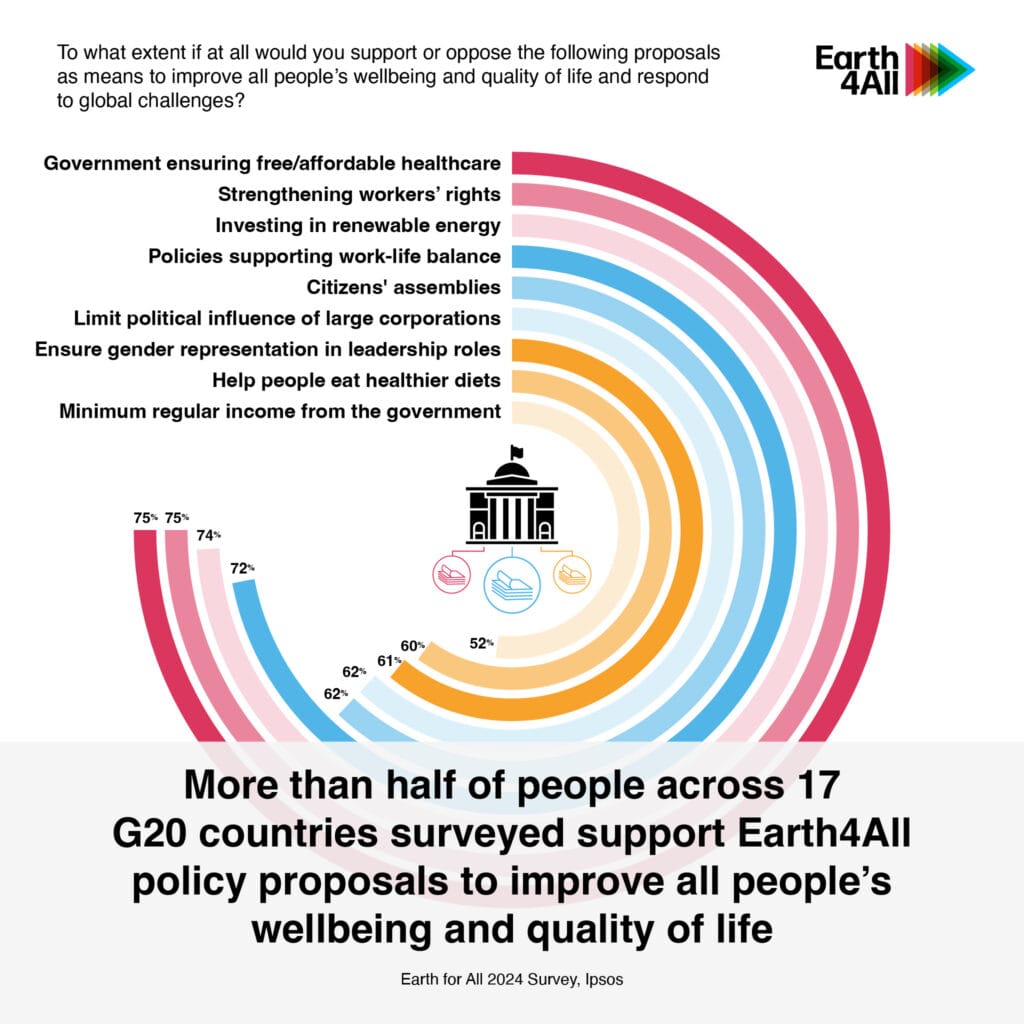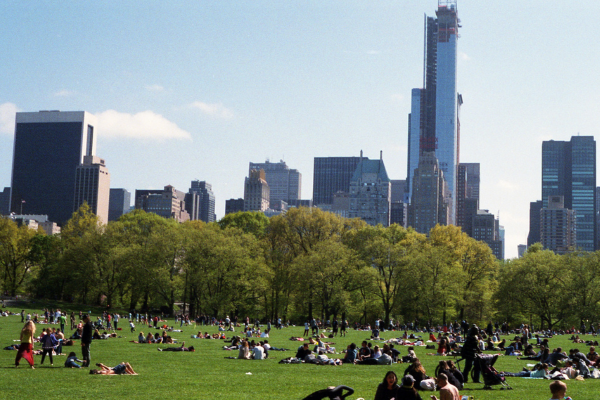Wellbeing economy
What is a wellbeing economy? How do you measure wellbeing? Find answers and learn more with our resources on economics that puts people and the planet first.

What is a wellbeing economy?
Learn more in Putting human and ecological wellbeing at the centre of our economies, our Q&A with wellbeing economy expert Lorenzo Fioramonti.
How can we measure wellbeing?
The Earth4All model introduces a measure of wellbeing called the Average Wellbeing Index. This was inspired by the Wellbeing Economy Alliance’s framework, and includes the following variables:
- Dignity: worker disposable income (after tax)
- Nature: climate change (global surface average temperature, in Celsius)
- Connection: government services indicated by spending per person, i.e., to institutions that serve common good
- Fairness: the ratio of owner income after tax to worker income after tax
Once wellbeing is quantified in this way, we can measure whether wellbeing is increasing or decreasing in society, and how implementing different policies might affect wellbeing.
There are many other, and complementary, ways we can measure wellbeing that are appropriate to different communities and contexts. WeAll co-founder Katherine Trebeck proposes ‘cornerstone indicators’ that are co-developed with communities and intuitively show things going well – for example, the number of girls riding their bikes to school every day.
Learn more about measuring wellbeing in What is economic wellbeing? by Till Kellerhoff and David Collste and Indications of a better world? by Katherine Trebeck.

Many studies show wellbeing plateaus as GDP grows. While, yes, people can buy things, they have to contend with clogged arteries from poor diets, clogged cities with SUV-infested streets, and clogged lungs from air pollution. At this stage, rational government policies would shift focus away from growth and rather seek increased wellbeing for the majority.
Earth for All: A Survival Guide for Humanity
Do people want a wellbeing economy?
In 2024, Earth4All and the Global Commons Alliance commissioned Ipsos to survey thousands of people around the world to find out their views on our economic system. The survey found that two in three people (68%) agree that the way the economy works should prioritise the health and wellbeing of people and nature rather than focusing solely on profit and increasing wealth.
We also asked about support for a range of policy proposals that would support wellbeing. Over half of people supported all the proposals, with highest support for universal healthcare, strengthening workers’ rights and greater investment in clean energy and transport.

Videos
Earth4All Executive Chair Sandrine Dixson-Declève makes the case for a wellbeing economy at the Wellbeing Economy Forum 2024.
What is the purpose of the economy? Where are wellbeing economies emerging? Watch this short video from WeAll to learn more.
Learn more
Wellbeing economy: deep-dive paper
Read the Earth4All deep-dive paper by Katherine Trebeck, Getting wellbeing economy ideas on the policy table: theory, reality, pushback and next steps.
Wellbeing Economy Alliance
Earth4All collaborates with WeAll, the Wellbeing Economy Alliance, a collaboration of organisations, alliances, movements, and individuals working towards economic systems change.



